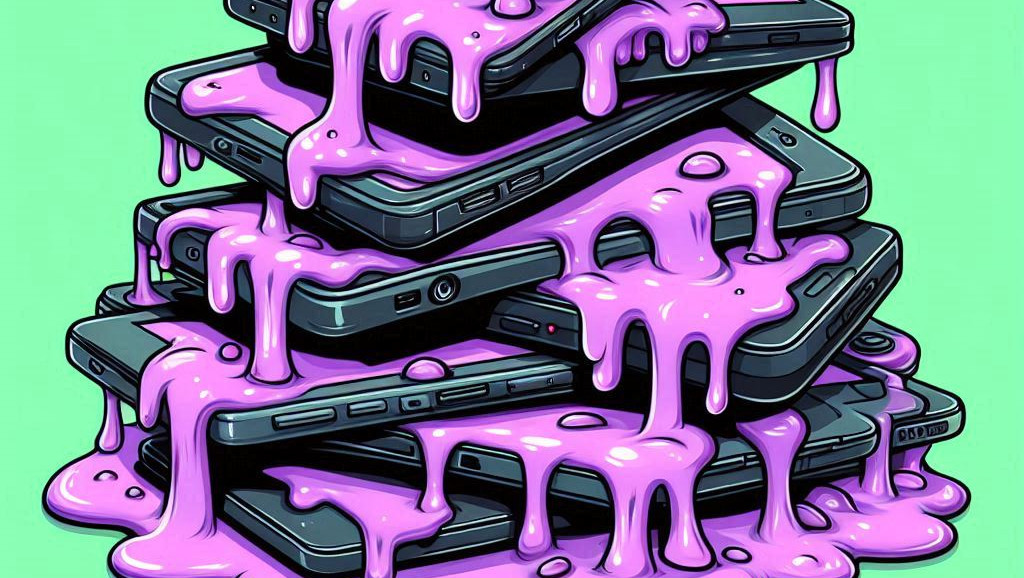The Current State of AI: Are We Witnessing a Race to the Bottom?
by on 5th Aug 2025 in News

AI slop is on the rise and society is stooping to new lows, while the current trajectory of the technology is unsustainable. Is there a light at the end of the tunnel?
Descending into an AI-slop dystopia
AI is front and centre of everything at the moment, from simply unlocking our phones with face ID to governmental plans for streamlining and executing operations.
The ad industry was one of the first to be supercharged by AI. And for better or worse, what a long way we’ve come. In June, Meta promised that pretty soon, advertisers will be able to use the platform’s tools to enable complete ad automation, with the goal now being to help brands create advertising concepts from scratch.
Following Meta’s announcement, we looked at the slew of potential negative effects these plans could cause, including the more serious risks such as harmful stereotypes being replicated in advertising as a result of possible biases in AI models, to worsening the flood of AI slop all over social media.
Are we descending into an AI slop dystopia? There’s definitely evidence to support it. We’ve seen some highly questionable AI-generated image and video content recently, even from the most powerful people and organisations.
Back in March, The White House shared an AI-generated image of a Dominican woman being detained by the country’s Immigrations and Customs Enforcement (ICE) on charges of fentanyl trafficking. Probably one of the most alarming examples, President Trump shared an AI-generated video depicting the Gaza Strip as ‘Trump Gaza’ – a resort style paradise, featuring himself, Netanyahu, as well as Musk. Incredibly disturbing, to say the least.
As for the written word, we’re also stooping to new lows. Just think of the AI-generated book rewrites which have inundated Amazon over the past few years. So much so that the company even introduced a new rule to limit the number of books that authors are able to self-publish on the site, following an influx of content which was suspected to be generated by AI.
The ongoing battle between AI and creatives
Meanwhile, the battle between the AI sector and the creative industries rages on.
A large number of creatives have spoken out about their concerns, sharing their frustration that AI companies have, so far, gotten away with scraping their copyrighted content in order to train content-hungry AI models. Artists, writers, and musicians have consistently demanded more protections against the technology.
OpenAI particularly has found itself under the spotlight, with a number of lawsuits accusing it of committing copyright infringement for the training of its flagship product, ChatGPT. One of the most prominent lawsuits against it is brought by The New York Times, which seeks “billions of dollars” in damages from both the AI company and its partner Microsoft.
More recently, Disney made moves to sue Midjourney over its image generator, which it described as a “bottomless pit of plagiarism”.
Zooming in on the UK, Keir Starmer’s Labour government has been attempting to defuse the debate – although not very successfully. A consultation was launched into the matter at the end of last year, requesting feedback on a plan to deliver a framework which “rewards human creativity, incentivises innovation and provides the legal certainty required for long-term growth in both sectors.”
Suggested changes to legislation set out to “include a mechanism for right holders to reserve their rights, enabling them to license and be paid for the use of their work in AI training”. Yet alongside this, they proposed “an exception to support use at scale of a wide range of material by AI developers where rights have not been reserved.”
In May, the House of Lords pushed back against the government’s plans. Peers backed (in a vote of 221 to 116) an amendment to the legislation – proposed by British politician and filmmaker Beeban Kidron – which would have required AI companies to reveal which copyrighted material they’ve used to train their models. The amendment was removed, however.
In June, the legislation was passed without the amendment which was largely pushed for by creatives. Elton John described it as “thievery on a high scale”. Given the reaction of most creatives, it’s safe to say that the framework didn’t “reward human creativity” or provide “legal certainty” nearly enough. There’s clearly a long way to go before the issue is defused.
The AI slop dystopia is unsustainable, too
It’s 2040… Your social media feed is awash with AI slop, ads automated fully from the point of concept creation have taken over the advertising ecosystem, and the climate crisis has reached unprecedented severity...
By now, most of us familiar with AI are aware that the technology is not doing us any favours when it comes to creating a more sustainable future. Not only is AI content-hungry – it’s also energy-hungry.
Google’s emissions have soared as a result of the technology: the release of its latest sustainability report revealed that its emissions have increased 51% since 2019. As if that figure wasn’t already terrible, Kairos Fellowship, a non-profit advocacy group, published a report claiming that Google’s emissions actually went up by 65% during this period. Google’s largest year-over-year rise in emissions occurred from 2023 to 2024, which saw a 26% jump, as the company’s focus on AI heightened.
Similarly, research reports that ChatGPT generates over 260,000kg of CO2 monthly. This is equivalent to 260 flights between New York and London.
Big tech’s water consumption is also becoming increasingly problematic. Google, Microsoft, and Amazon’s plans combined involve a 78% increase in their number of data centres worldwide, as cloud computing and AI lead to a skyrocketing demand for storage. The hundreds of data centres being planned in the US and across the globe pose a huge potential impact on populations struggling with water scarcity. Bloomberg found that about two-thirds of new data centres built or in development since 2022 are located in “places already gripped by high levels of water stress”.
To make matters worse, just a couple of weeks ago, President Trump passed a trio of executive orders, one of which called for the deregulation of AI development, increasing the building of datacentres, and ceasing environmental protections which could hinder their construction.
Is there a light at the end of the tunnel? Or have we been sucked into a black hole?
It doesn’t look like we’re seeing the light at the end of the tunnel anytime soon. AI is still in its infancy, and with the current speed of development, it’s hard to predict what could happen in the coming years.
The period of AI hype we’re currently living through presents a plethora of new problems. But as we know, it also opens up a whole new world of possibilities. Its speed – almost instant, in many cases. Its cost-effectiveness – allowing the creation of creative at a much more affordable rate. Its scalability – the technology able to simply facilitate large-scale production, without compromising quality or speed.
You decide: do the positives outweigh the negatives?
AICreativeEnvironmentalMetaSustainability








Follow ExchangeWire